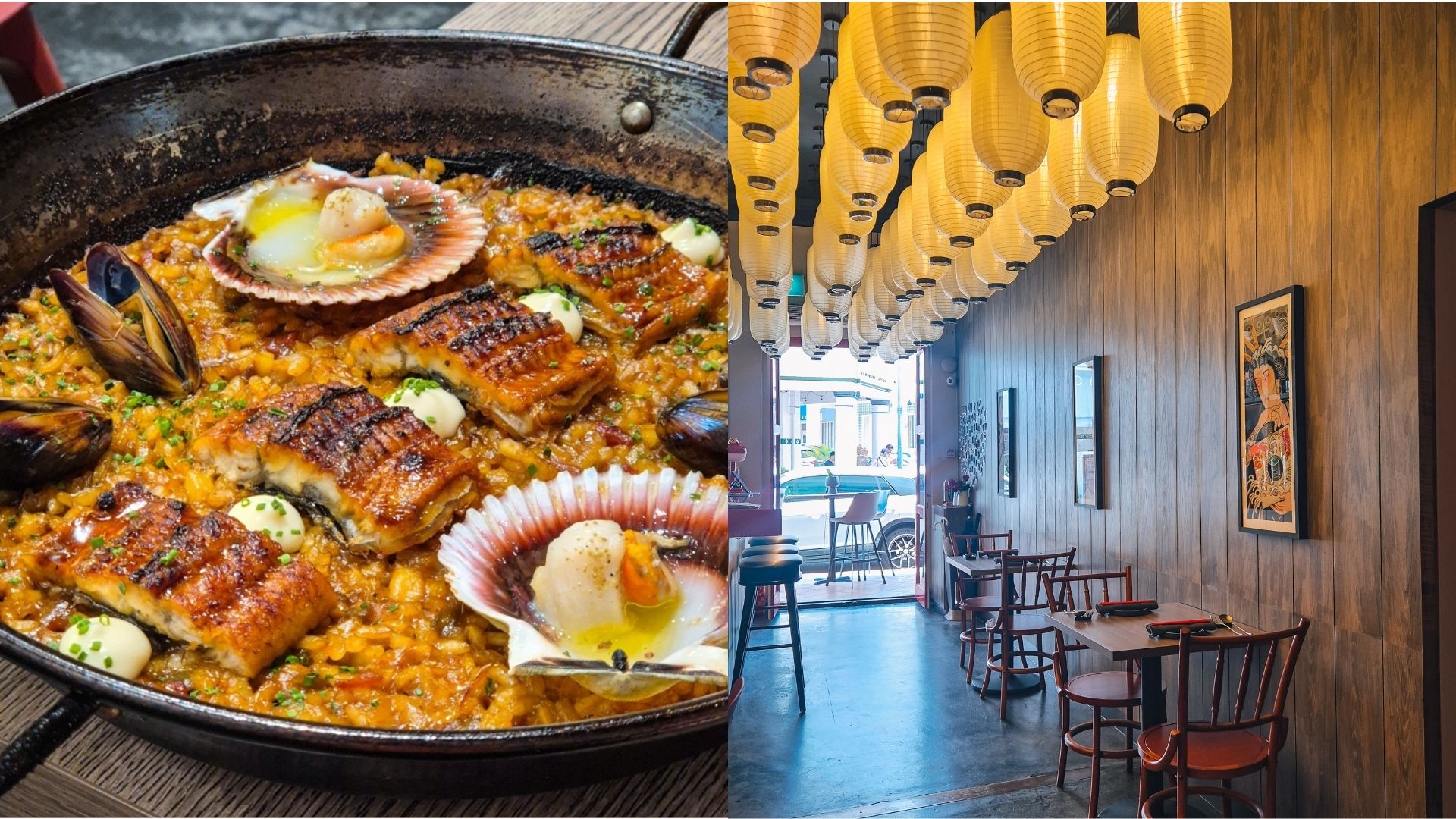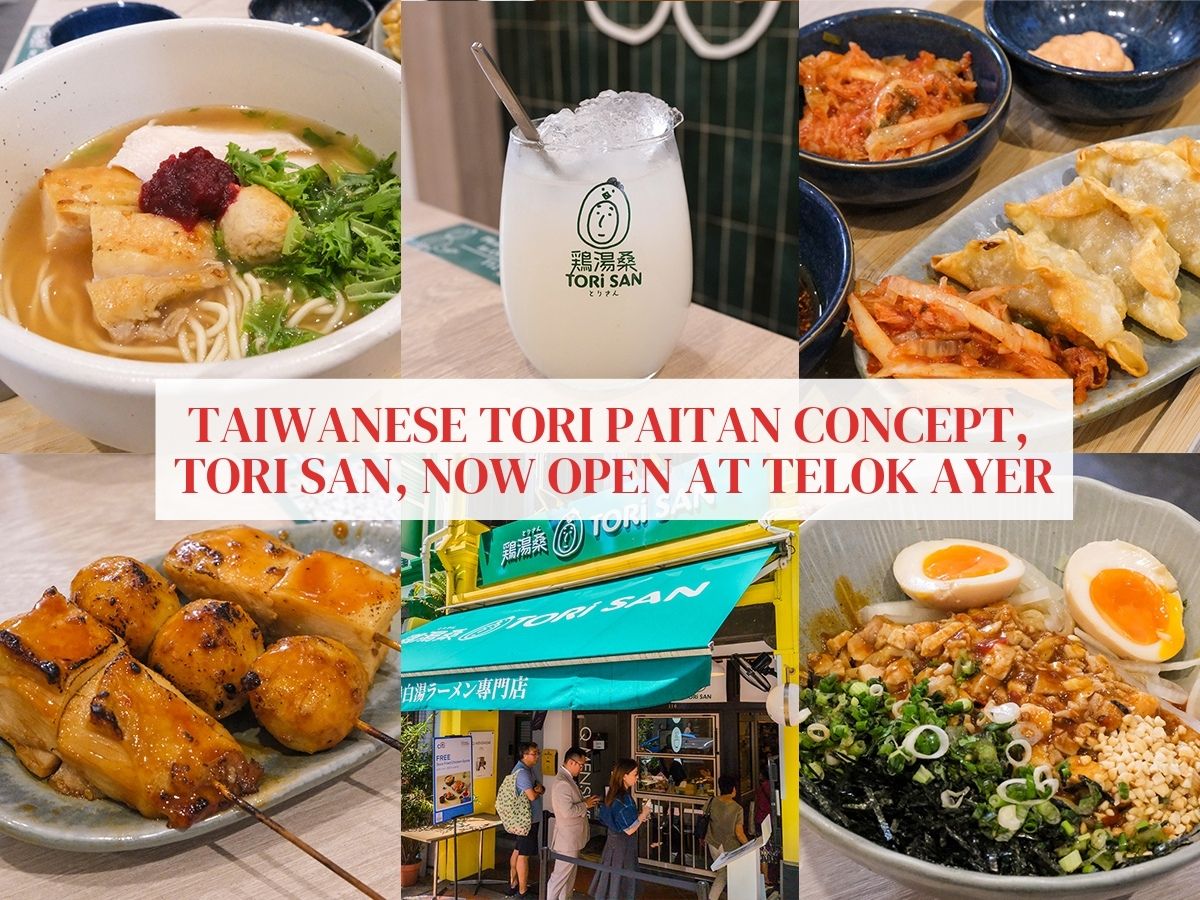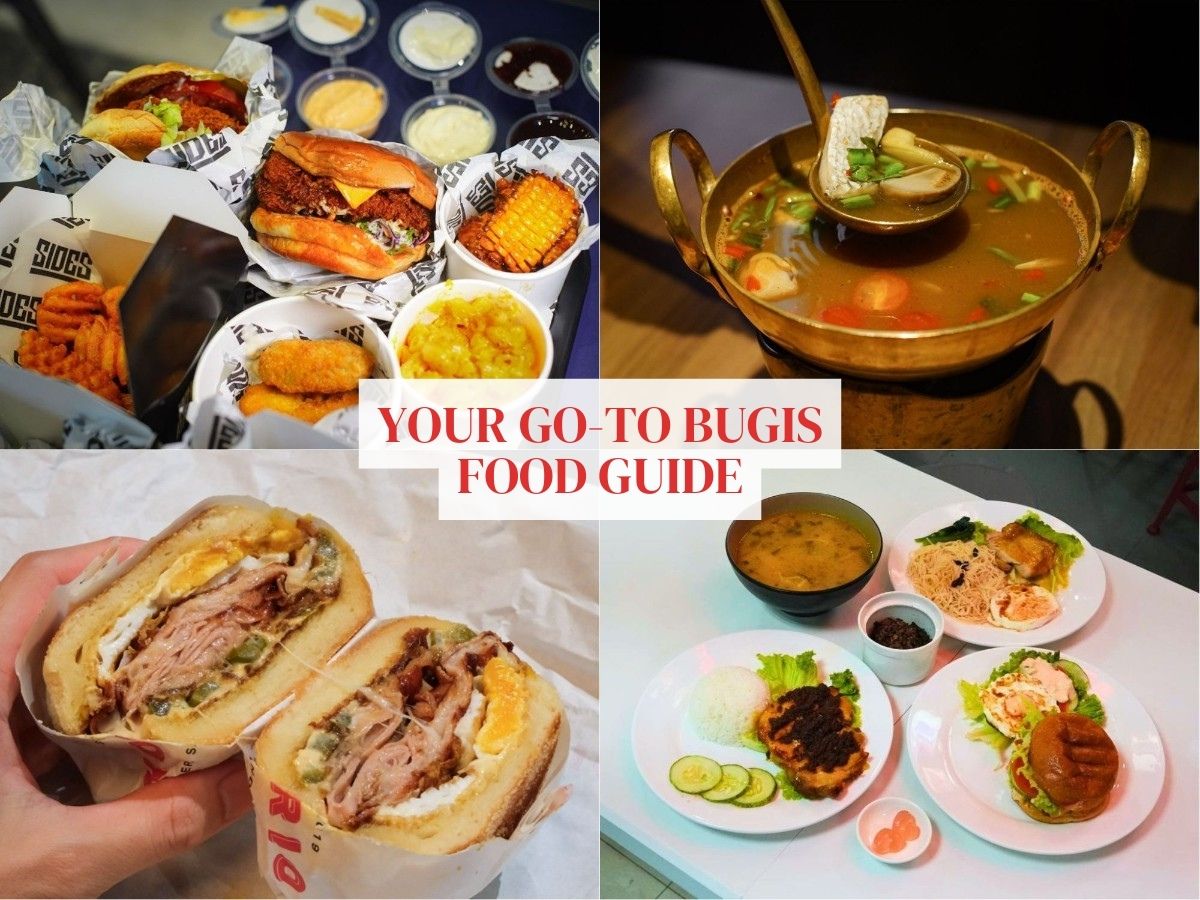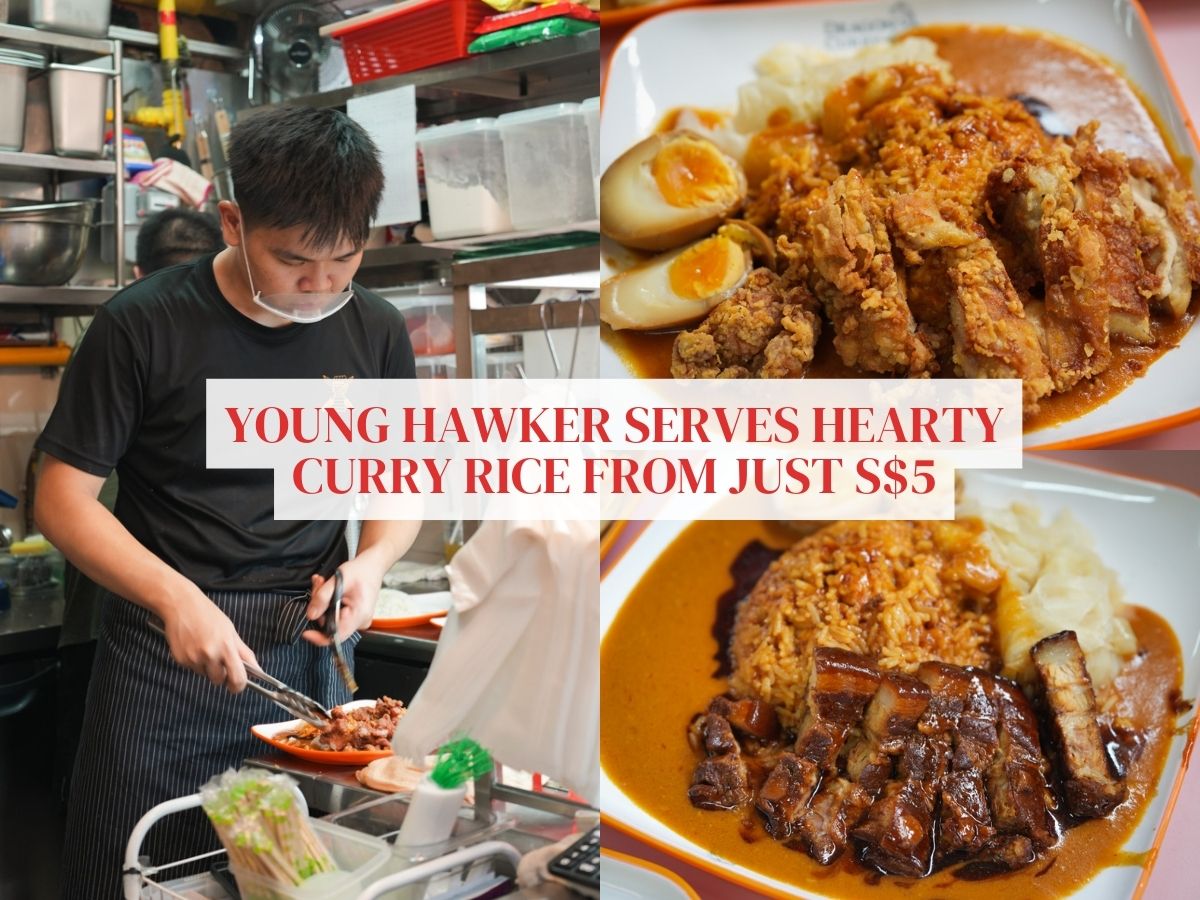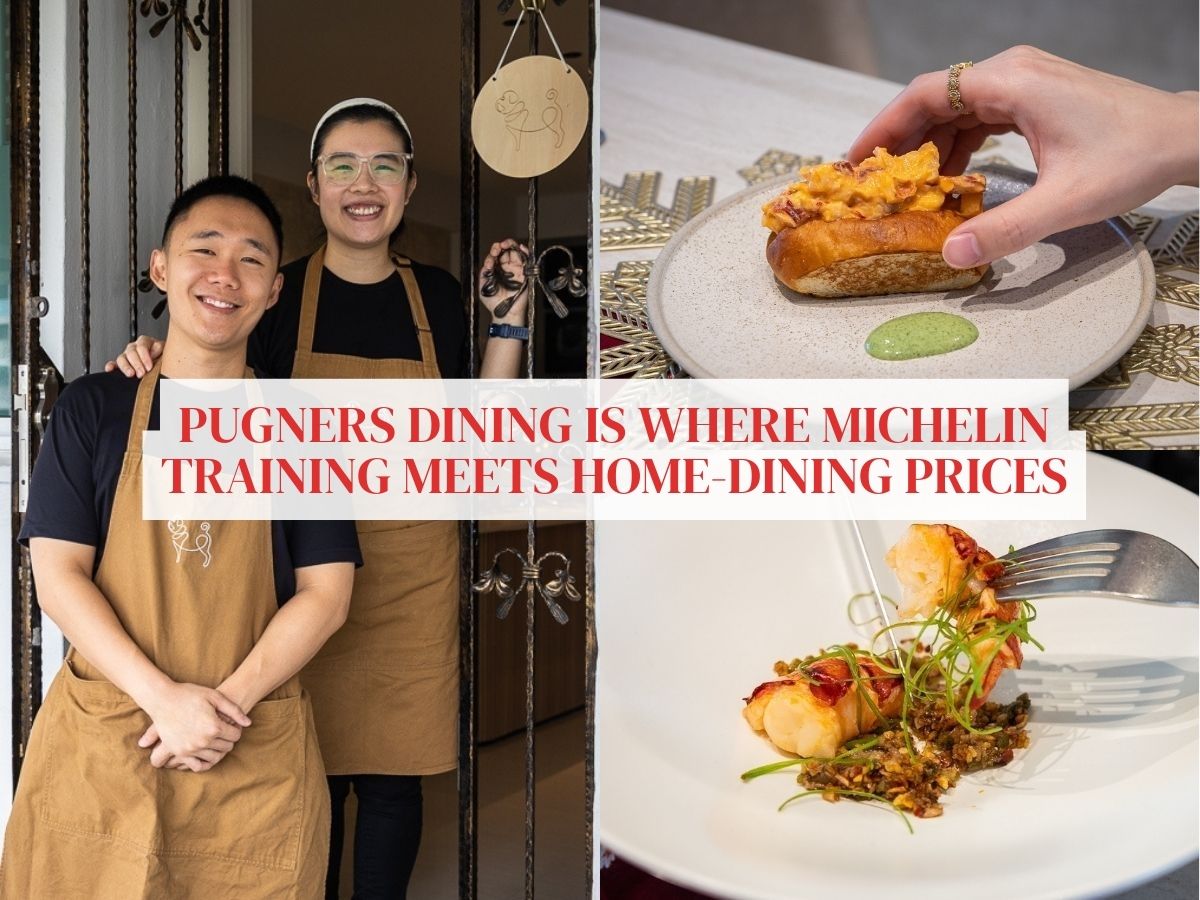Humo: New Spanish izakaya concept serving up bold fusion plates along Keong Saik
Keong Saik has seen many new openings in the past few months, with the likes of Maggie’s and Nomada moving into the quaint street. But there hasn’t been anything quite like Humo, which brands itself as a Spanish izakaya, yet.
Helmed by chefs Carolina Garcia Santamaria and chef Jordi Jou, Humo is their way of bringing across something “casual and welcoming, yet bold and serious about flavour”.
Chef Carolina also heads up Tapas 24 Singapore, while chef Jordi counts Michelin-starred Gaig Restaurant in Barcelona (and its Singapore offshoot, too) as one of the many restaurants under his belt.
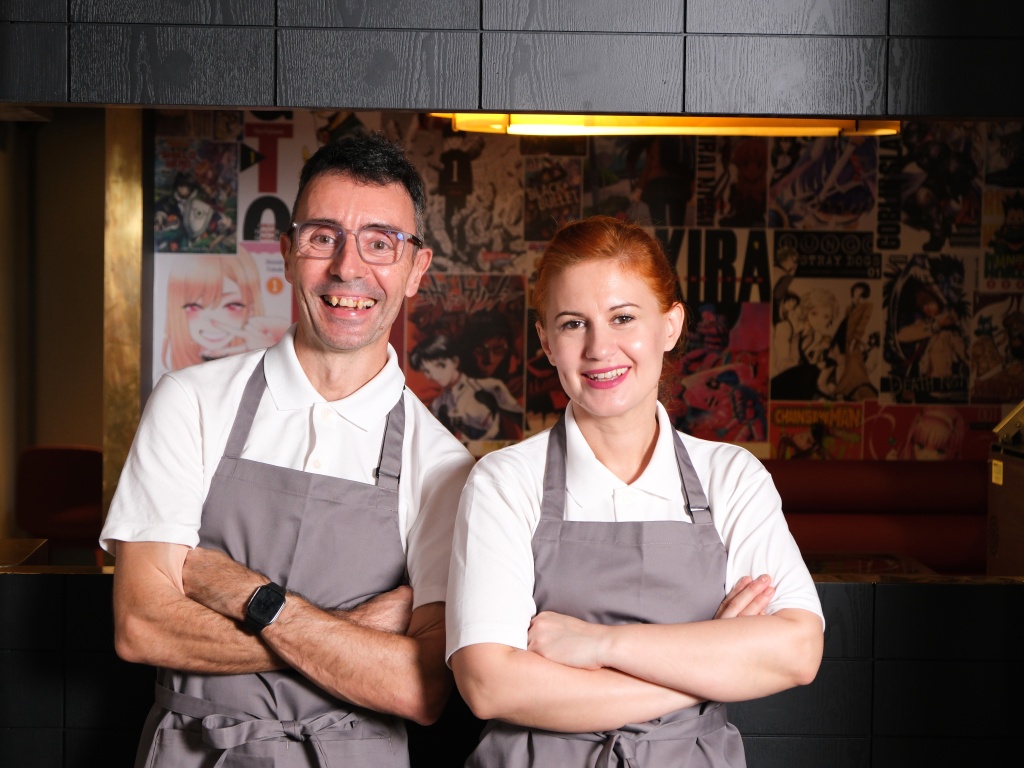
In case you’re wondering just what a Spanish izakaya entails, think of Spanish tapas plates, combined with Japanese ingredients and culinary techniques, in a vibey izakaya setting.
If it sounds chaotic, take it from us — it’s a good kind of chaos.
Chef Jordi explained that when they looked at izakayas in Japan, they were “exactly the same” as bars in Spain — you can expect comfort food, small (sometimes even messy) plates, alcohol, and a casual place where friends could easily gather.
That’s why the both of them had the idea to start Humo, which means “smoke” in Spanish, at Keong Saik.
Stepping into Humo’s space, you’re greeted immediately with a deep-red aesthetic and Japanese lanterns overhead — both of which scream Japanese from get-go — along with other trinkets and graphics from the Land of the Rising Sun.
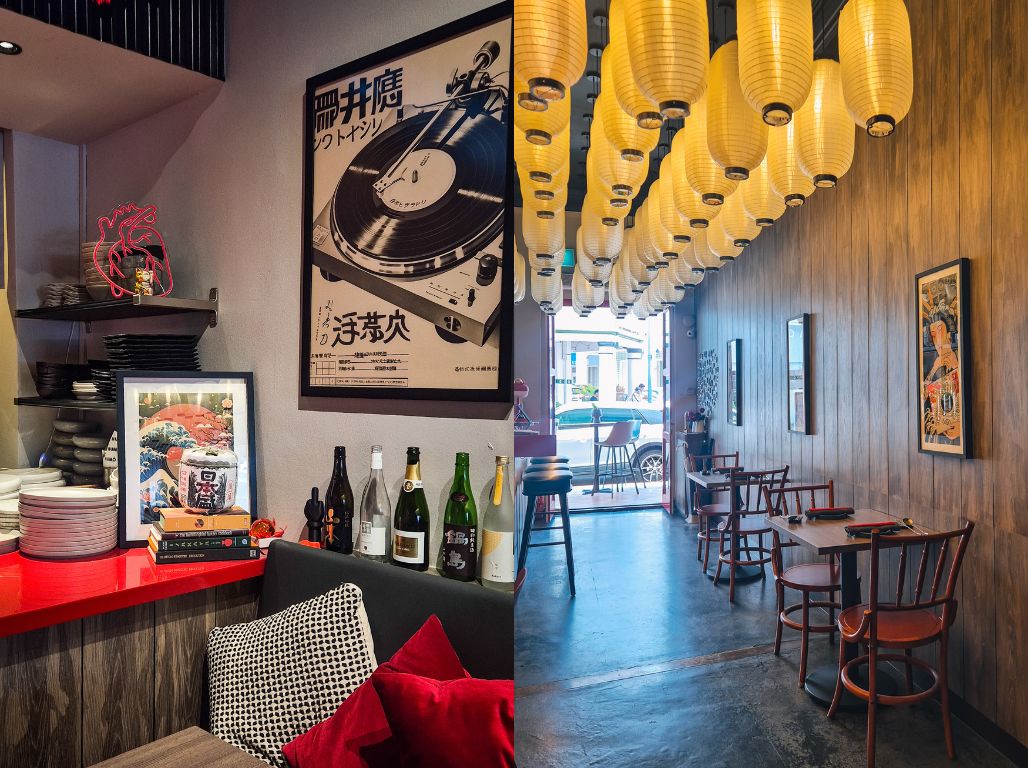
Fusion concepts can sometimes be a bit gaudy, but this isn’t too in-your-face.
You can also look right into the open kitchen and watch as your food is prepared, giving you the sense that you’ve stepped right into a friend’s home and you’re waiting as they whip up something for you.
Trying Humo’s Spanish izakaya-style menu
Just looking at the menu, it was clear the Spanish influence was still there — there’s padron peppers, potato salad, croquettes, gazpacho, and paella, of course.
But look closer and you’ll notice the Japanese elements, weaved seamlessly into the mix.
We started off with a Japanese mackerel with Spanish potato salad (S$18). Instead of serving this in a mound in a bowl, you get the salad slathered on a cracker, topped with small pieces of Japanese mackerel, and quail egg.
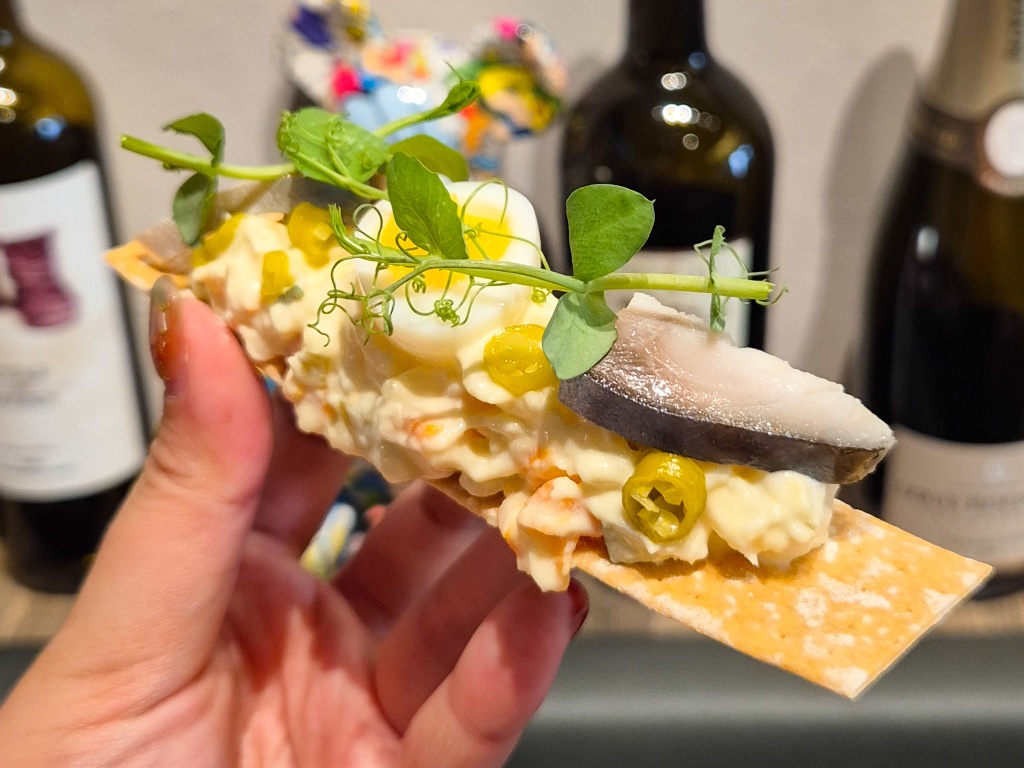
Spanish potato salad (actually known as “ensaladilla rusa” or “Russian salad) is a common tapas bar dish, but Humo’s version amps up the umami with the addition of the salty Japanese mackerel, as well as the use of what we think is Japanese Kewpie mayonnaise. Oiishi, indeed.
The oysters with spicy “chilli crab” gazpacho (S$12 for two pieces) had a sauce that tasted more gazpacho than chilli crab, but I really enjoyed the chefs’ inclusion of mini yuzu spheres within the sauce for a tangier punch.
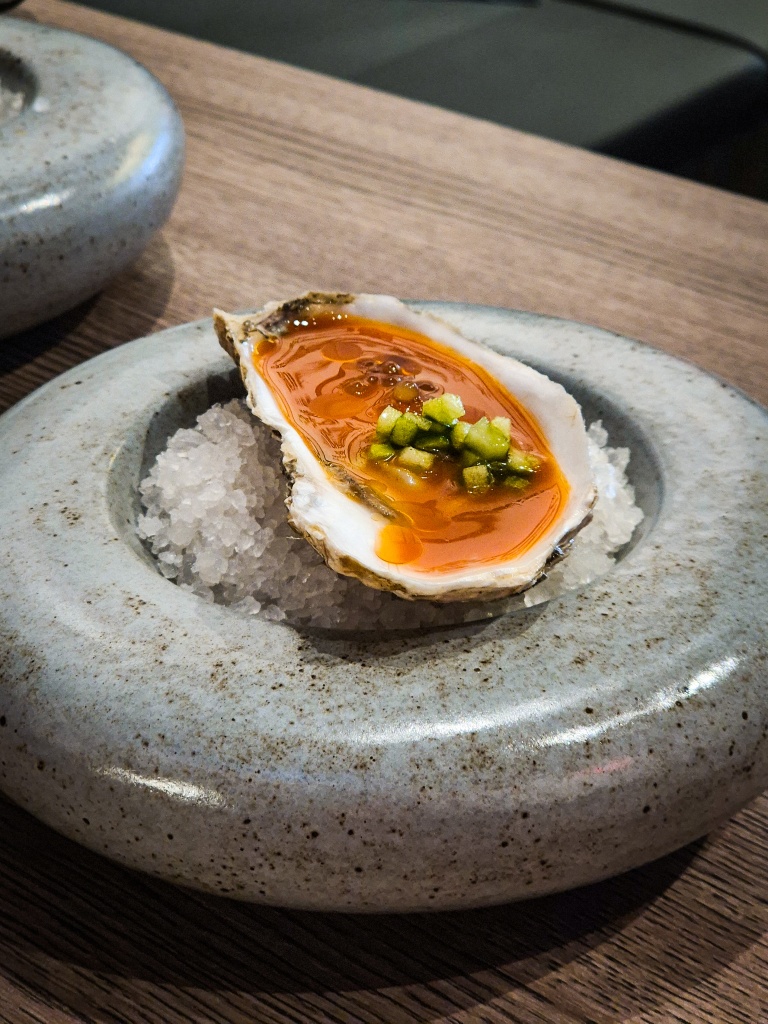
Another flavour bomb on the menu is the crab and prawn croquettes (S$10 for two pieces). Croquettes are a common dish, too, in a Spanish tapas spot. But there was just something that made it incredibly addictive — dashi.
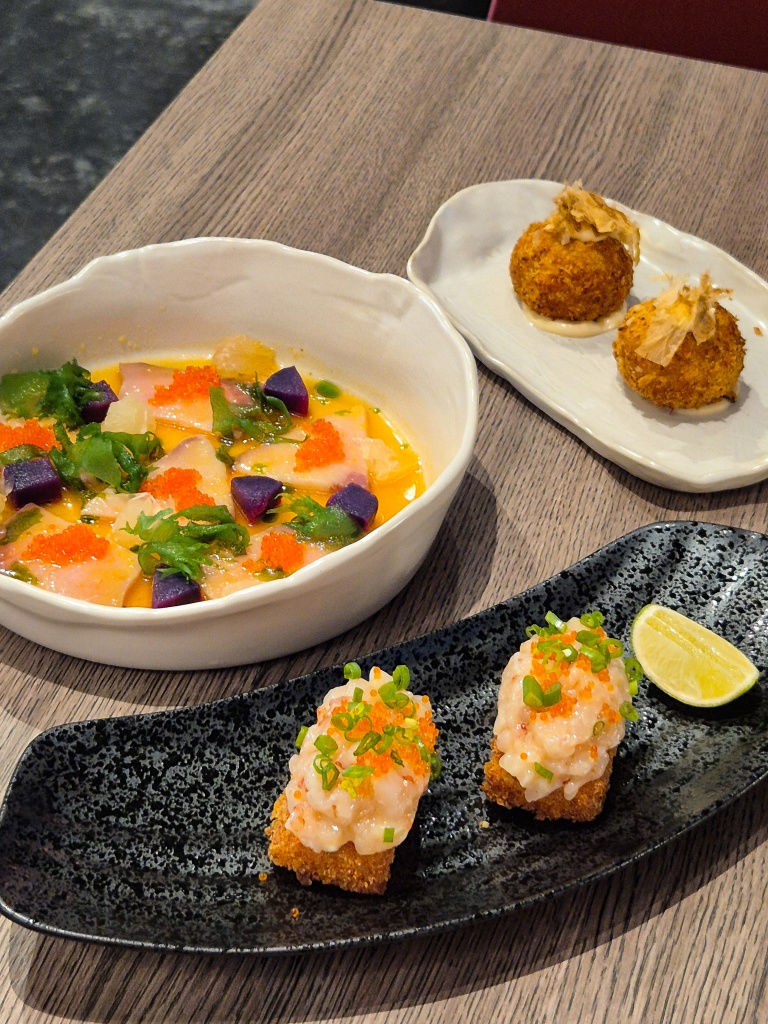
The Argentinian prawn tartare with crispy rice sushi (S$24) is probably one of the more obviously Japanese-inspired dishes so far (and reminds us a bit of Nobu’s crispy rice with spicy tuna).
Humo’s version has milder flavours — in a good way — allowing the sweetness in the prawns to really shine. Chef Jordi tells us that they would obviously not do as well as Japanese chefs when it came to sushi rice, so crispy rice it was.
To wrap up the mains, definitely give the Peruvian-style hamachi tiradito with aji amarillo dressing (S$20) a go.
The dressing is a typical Peruvian one, made of aji amarillo peppers, said to be slightly fruity and sweet. Chef Carolina had encountered Nikkei cuisine, a fare blending Japanese and Peruvian elements, when travelling around Peru, which inspired this dish.
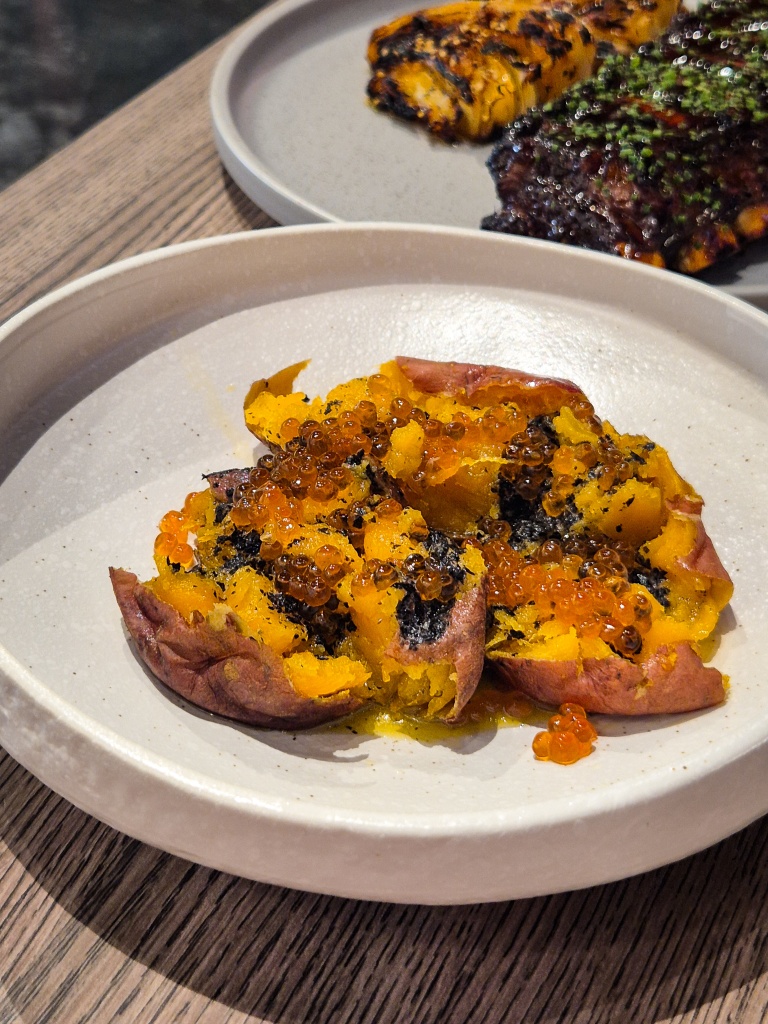
Moving onto the bigger plates, the roasted Japanese sweet potato with nori butter and ikura (S$18) is as delicious as it sounds, and reminds us of the highly coveted Donki roasted sweet potatoes, but more buttery.
Humo has a variety of proteins when it comes to its sharable mains, but we’d say go for the chargrilled iberico pork rib with Japanese cabbage (S$38).
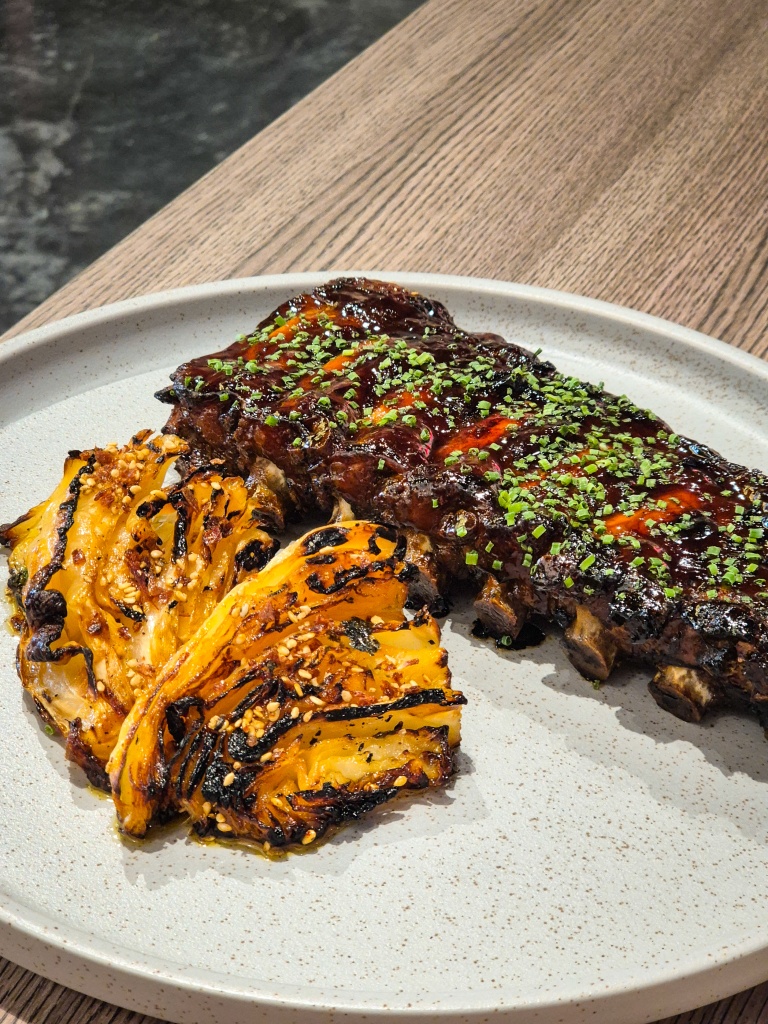
Not only is it a sizable portion, the teriyaki-glazed ribs are done beautifully here, as is the charred cabbage wedge. The cabbage comes with a miso-gochujang marinade, finished with a drizzle of Moroccan spice (ras el hanout) oil — you get a good mix of umami and heat, but not too much.
Lastly, if you’re looking to try the paellas, we’d suggest getting the seafood (S$38) one, which comes with good chunks of eel, scallops and mussels, for a true fusion take on the quintessential Spanish dish.
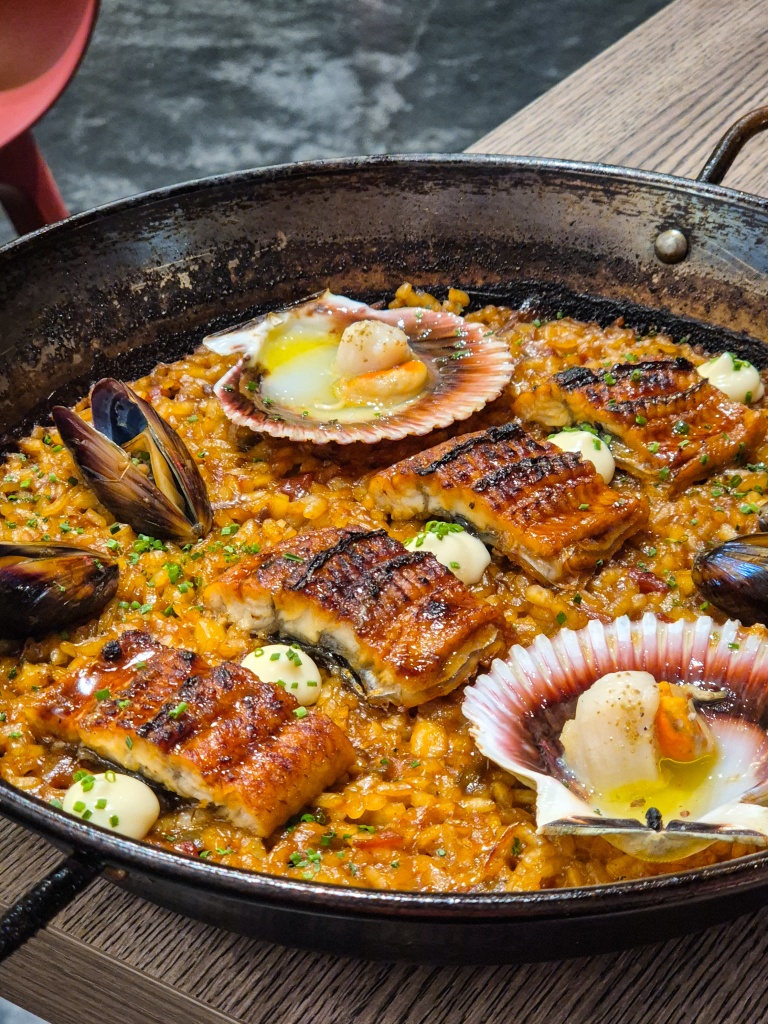
Having tried the dishes and spoken to chef Jordi, the place felt a lot more like a Japanese-inspired Spanish tapas bar to us, rather than a Spanish-style izakaya.
But you know what? Potayto, potahto. As long as there’s good food, we don’t really care what you call it.
With so many other plates left to try, we’re already raring to head back and see what the other combinations are like.
We’d suggest saving a spot in the evenings when it’s apparently a lot vibe-ier, so you can also try its many wines and cocktail concoctions, such as the Humo spritz (S$18) and the sake sangria (S$20) too!
This was an invited tasting.
For more ideas on what to eat, check out our take on the new Mediterranean menu at Christina’s at Mondrian Singapore Duxton, and our round-up of the newest eats around town.
Wed 5pm – 11pm
Thurs 5pm – 11 pm
Fri 12pm – 2.30pm, 5pm - 12am
Sat 12pm - 2.30pm, 5pm – 12am
Sun 12pm - 2.30pm, 5pm - 11 pm
- Outram Park
